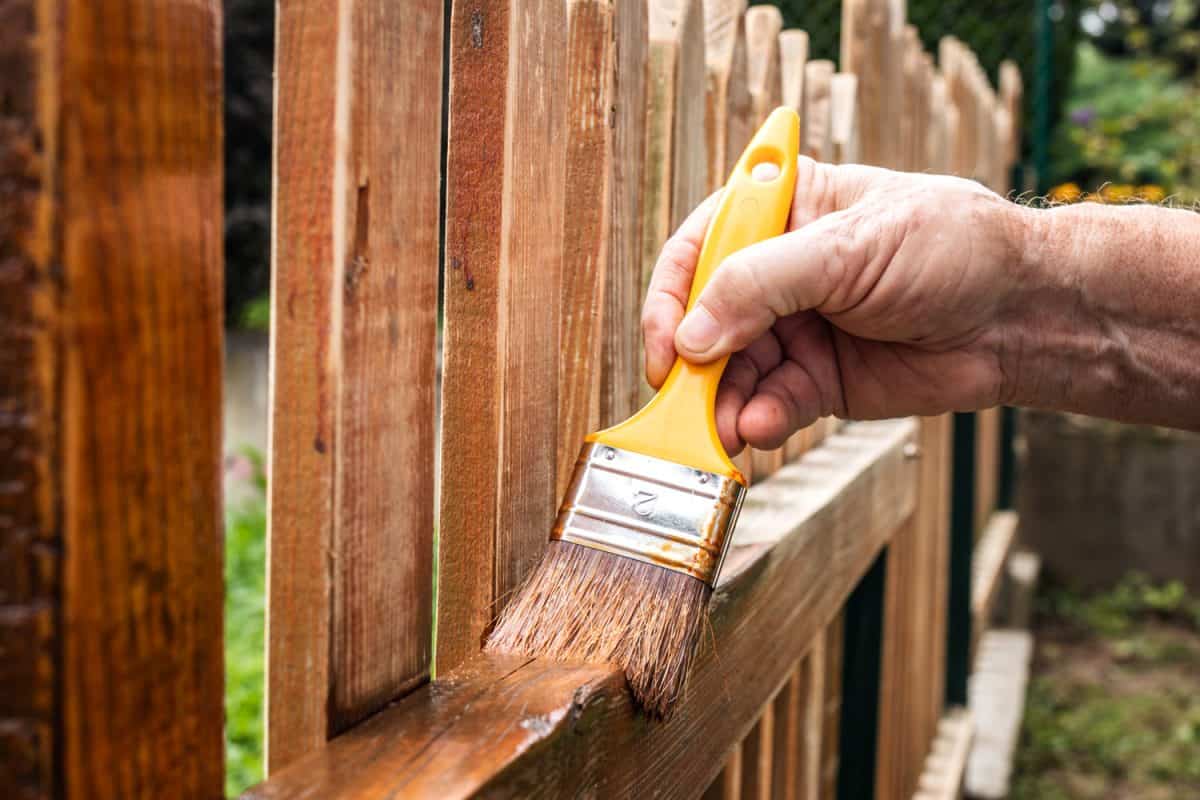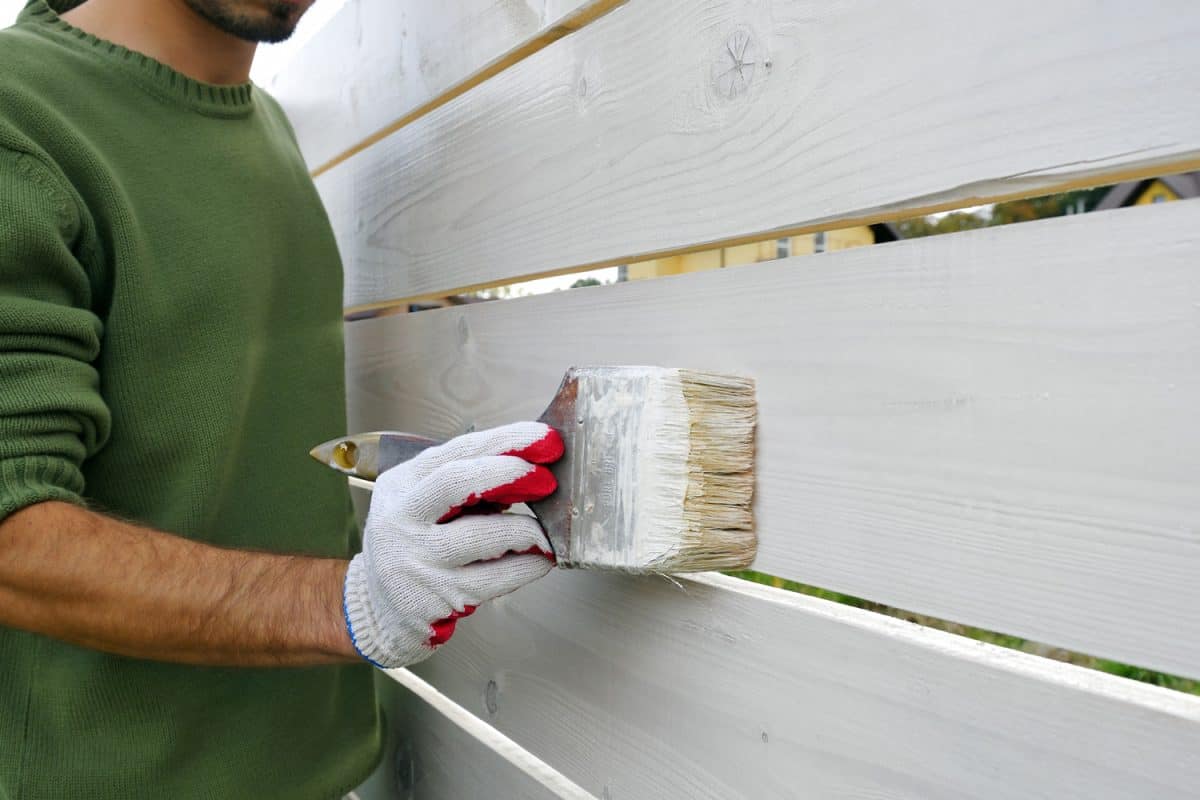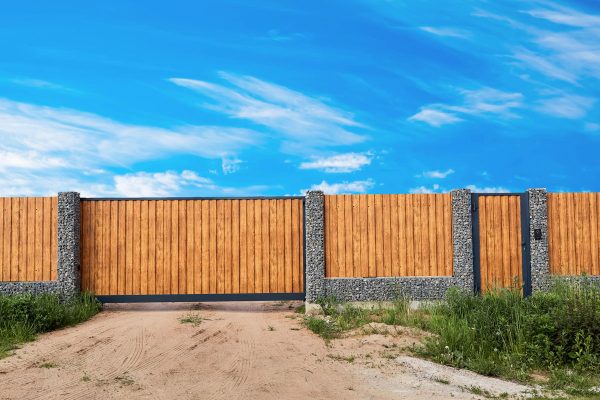For a lot of homeowners, there is always a question of what works best for wooden fences—is painting nicer or is staining better? If this is something you've wondering about, we've researched this topic for you and looked into different ways on how you can best protect your fences in this post.
For wooden fences, you can either use paint or stain to seal the wood. Both of them can provide ample protection from the elements and can change the appearance of your wood fence. However, paint does have the tendency to peel in time, while stain can be a bit expensive which makes it not-so-budget friendly.
Choosing a sealing option for your wooden fences can be a little confusing. We've looked into giving you the best options on how you can maximize these sealants on your fences so do keep on reading this article to see which would suit your property best.

What Should I Use, Paint or Stain?

Wooden fences are beautiful to look at and they give your property a classic look. These fences are very sturdy and they last for years, but in order for these fences to last, the wood should be protected from the elements. This can be done by sealing wooden fences, and you can do this by either using paint or wood stain.
Sealing wooden fences is an important step in making sure that the wood will last for a long time. Arguably, a lot of homeowners are left to decide between using paint or stain for sealing their wooden fences. Here are a few advantages and disadvantages:
Paint: Advantages and Disadvantages
Sometimes, we see homes with colorful wooden fences or painted in the classic white color. Paints generally give wooden fences a dramatic change in look because it hides the natural look of the wood. If you have old fences that need a little sprucing up, one of the most suggested ways to do this is to give your wooden fences a fresh coat of paint.
Advantages:
- A good, quality coat of paint will protect your wooden fences from sun, rain, wind, and most weather conditions for years.
- Painting your fences can help prevent rotting of the wood.
- Using paint can drastically change the look of your fence. It also comes in different colors and finishes.
- Paint is very low maintenance. You will only have to repaint your fences when it wears off, but quality outdoor paint should last your for 5 years or more if applied correctly.
- For those who are on a budget, paint is a lot cheaper in cost.
- If your old fence already has a coating of stain on it, you can paint over it to freshen up the look of your fence.
Disadvantages:
- Painting a fence can be a little more tedious than just staining them. It requires extra preparation like priming before you can start painting your fence.
- There is a tendency for paint to flake and peel over time because of their exposure to the elements.
- Some paints that are best used on wooden fences may not be environmentally friendly.
- Paint will also cover up the natural beauty of your wood grain.
Stain: Advantages and Disadvantages
If you are more keen on keeping a classic, rustic feel to your wooden fences, then the best sealant that you should choose is a good quality wood stain. Fences that are stained shows off the beauty of the wood's natural grain and if you've invested in the best wood for your fence, this is a great way to show it off!
Advantages:
- Wood stains emphasizes your wood's natural grain.
- Some wood stains don't take up too much effort—one layer of stain and you're done!
- Stain protects your wooden fences from the elements.
- A waterproof stain can prevent splintering, cracking, or warping of your wood.
- It does not peel or crack unlike paint, and wood stains simply gets absorbed into your wood fencing.
Disadvantages:
- It requires more maintenance than paint. Your stained fence should have a new layer reapplied after about two or three years.
- Stain has the tendency to fade over time because of its exposure to sunlight.
- Staining cannot be done if the temperature is too cold and regular application of wood stain takes longer than just painting your fence.
- Wood stains can be a little bit more expensive than paint, so it would be wise to consider this if you are working on a budget.
What Is The Best Fence Paint and Stain?

By now, you should have an idea of which type of material you will be using to seal your wooden fences. Whether you choose paint or wood stain, it will surely protect your fences so it will last for a long time. Here are a few choice suggestions on what kind of paint or stain you can use for your fences:
Paint
There are two types of fence paints that you can use for your wooden fences: oil-based or water-based. Of course, just like any other paint job, it is important that you should prime your wooden fences before painting them in order to further seal and protect the wood. It will also give your paint something to hold on to.
Primer
Before getting excited over your fence's new color, it is important to prime your wooden fence. Most exterior paint formulas are already self-priming. However, if the paint you have chosen does not have a primer mixed in, it is important to get a quality paint primer for exterior application.
Check out this all-surface primer on Amazon.
Oil-based
If you are looking for a durable fence paint, then you should use oil-based paints on your wooden fences. These paints lasts longer than water-based paints and it is very resistant to dirt. Oil paints also give off that tough, enameled look on your fences and it can withstand weather elements better than water-based paints.
See this oil-based fence paint on Amazon.
Water-based
Water-based paints or latex paints is easy to use and apply. It is also a very flexible paint because it expands and contracts with the temperature, making it very resistant to cracking. Latex paints also come in a multitude of colors plus they are more environmentally-friendly than oil-based paints.
Get this self-priming latex paint on Amazon.
Stain
Staining your fence shows off the best qualities of your wood instead of covering them. There are many wood stains that you can choose from and they can range from light stains that shows off the wood grain, to darker stains that can provide color to your wood.
Check out this wood stain and sealer from Amazon.
When Is The Best Time To Stain or Paint A Fence?

Generally speaking, you should be able to paint your fence anytime as long as the weather is good and it isn't raining continuously. Choose a dry day to paint your fence because it will help your paint dry and cure faster than doing it on humid days. Most professionals prefer doing fence painting jobs during the summer months for this reason alone.
Staining wood fences on the other hand, should be done during warm weather because it does not do well in cold temperatures. It is highly suggested to stain your wooden fences when the temperatures are between 50 to 90°F and it doesn't rain before or after your project.
Final Thoughts

Having a wooden fence means that you should seal it to protect it and make it last for a long time. Depending on what you'd like to achieve, you can either use paint to dramatically change the look of your fence or use stain to keep the natural beauty of your wood. Either way, whichever you choose will help keep your fence in its best shape and it will keep your wood protected.






![Close board fence erected around a garden for privacy with wooden fencing panels, concrete posts and kickboards for added durability, Are Gravel Boards Treated? [And How Long Do They Last]](https://fencefixation.com/wp-content/uploads/2022/06/Close-board-fence-erected-around-a-garden-for-privacy-with-wooden-fencing-panels-concrete-posts-and-kickboards-for-added-durability-600x400.jpg)
![Wooden fence with green lawn and trees, Stepped Vs. Racked Fence Installation [Where & How To Use Each]](https://fencefixation.com/wp-content/uploads/2022/06/Wooden-fence-with-green-lawn-and-trees-600x400.jpg)